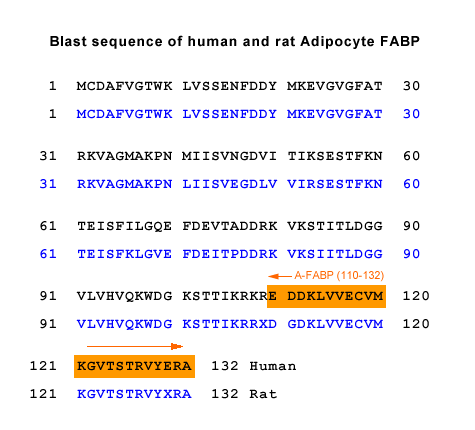BACKGROUND: Adipocyte-fatty acid binding protein (A-FABP), a major cytoplasmic protein in adipocytes, plays a central role in the development of diabetes and atherosclerotic cardiovascular disease in experimental animals. We have previously shown that A-FABP is present in the bloodstream and that its circulating levels correlate with metabolic risk factors in a cross-sectional study. In the present study, we further evaluated the prospective association of A-FABP with the metabolic syndrome (MetS) as defined by the updated National Cholesterol Education Program criteria.
METHODS AND RESULTS: In the present study, 495 nondiabetic adults from the population-based Hong Kong Cardiovascular Risk Factor Prevalence Study were prospectively followed up for 5 years. The relationship of serum A-FABP with the MetS and its components was investigated. At baseline, high A-FABP levels were associated with the MetS (odds ratio, 4.0; 95% CI, 1.5 to 10.4; highest versus lowest sex-specific tertile, adjusted for age, body mass index, the homeostasis model assessment index for insulin resistance, C-reactive protein, and adiponectin, P=0.005). On long-term follow-up, subjects with higher baseline A-FABP levels had progressively worse cardiometabolic risk profile and increasing risk of the MetS. Among 376 subjects without the MetS at baseline, 50 had developed it at 5 years. Apart from the homeostasis model assessment index for insulin resistance (P=0.001), baseline A-FABP was the only independent predictor of the development of the MetS during the 5-year follow-up (odds ratio, 4.7; 95% CI, 1.8 to 11.9; highest versus lowest sex-specific tertile, P=0.001, adjusted for the homeostasis model assessment index for insulin resistance and body mass index). A-FABP was predictive of the MetS even after adjustment for each of its individual components.
CONCLUSIONS: Circulating A-FABP predicts the development of the MetS independently of adiposity and insulin resistance.
Xu A, Tso AW, Cheung BM, et al. Circulating adipocyte-fatty acid binding protein levels predict the development of the metabolic syndrome: a 5-year prospective study. Circulation. 2007;115(12):1537-43.









